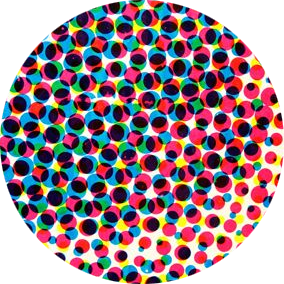Costume, Sexuality & Power in Tarpé Mills’ “Miss Fury”

In his essay “Tarpé Mills’ Miss Fury: Costume, Sexuality and Power,” appearing in the book “Supersex,” pioneer comics scholar Richard Reynolds analyzes #MissFury, the first female superhero created by a woman, as a rich—and potentially queer—exploration of gendered power. 1/14




This fluidity manifests in a focus on costume & performance. Miss Fury’s origin story proceeds from a fashion faux pas. Bored heiress & socialite Marla Drake must find a new costume after discovering she’s chosen the same dress as another woman for her masquerade party. 5/14

In Reynolds’ words: “Appalled, Drake accepts the suggestion of her maid and confidante Francine and switches clothes, donning an African heirloom from her uncle: a pitch black, skin-tight leopard-skin costume that incorporates a mask, ears, and a whip-like tail.” 6/14

“The panther suit turns out to have mysterious superpowers, and Drake is immediately drawn into crimefighting, spending the evening beating and capturing a criminal instead of attending the fancy-dress party.” Evidently, Drake discovers a more exciting masquerade. 7/14

As Reynolds acknowledges, this story is steeped in appropriative exoticism: “Drake’s access to the power of masquerade flows, unquestioned, from both her wealth and her whiteness.” Nevertheless, the strip’s influences are wide-ranging and complex. 8/14

Drake’s civilian costumes have as much symbolic depth as her catsuit. Following the fall of Paris to German forces in 1941, fashion magazines emphasized bold, heroic colours & silhouettes. Drake’s wardrobe evokes this trend, a fantastic protest against austerity & hardship. 9/14

These fantastic fashions are problematically frivolous. But they also speak to Miss Fury’s complicated relationship to objectification. The character is beautiful and glamorous, but these qualities don’t only—or even primarily—serve men. They are female fantasies, too. 10/14

Moreover, the strip thematizes the concept of masquerade and the transformative—and subversive—potential of dressing up. One of many examples is an early story involving a second Miss Fury committing crimes in the character’s name. 11/14

Drake suspects the second Miss Fury is her arch-nemesis, Baroness Erica Von Kampf. Instead, the double is a male gangster named Rico who Drake had tried to seduce. In “Miss Fury,” clothes make the woman & initiate multiplicities of desire, for others & other selves. 12/14

Reynolds cautions “Miss Fury” is, at best, proto-feminist. She’s often captive and worrying about men. But the strip’s fantasies maintain multitudes. Drake never settles down with a man. Her family is composed of an adopted son & her maid/confidant/life companion Francine. 13/14

Concludes Reynolds: “This may be Marla Drake’s ultimate masquerade: to be a deeply encoded queer character who negotiates her transgressive identity within the rules of genre fiction and the performance of gender and sexuality which prevailed in her time.” 14/14
